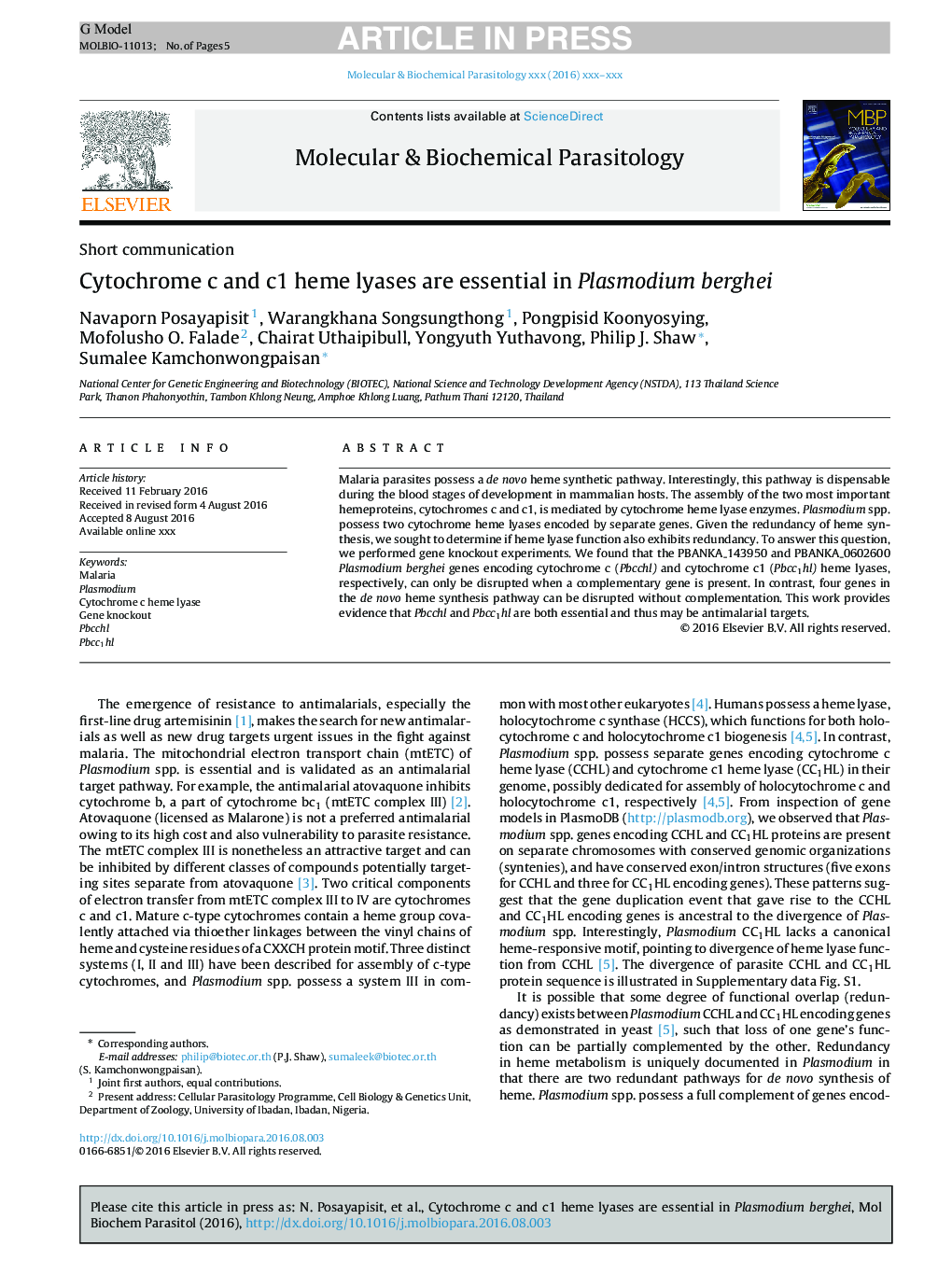| Article ID | Journal | Published Year | Pages | File Type |
|---|---|---|---|---|
| 5591788 | Molecular and Biochemical Parasitology | 2016 | 5 Pages |
Abstract
Malaria parasites possess a de novo heme synthetic pathway. Interestingly, this pathway is dispensable during the blood stages of development in mammalian hosts. The assembly of the two most important hemeproteins, cytochromes c and c1, is mediated by cytochrome heme lyase enzymes. Plasmodium spp. possess two cytochrome heme lyases encoded by separate genes. Given the redundancy of heme synthesis, we sought to determine if heme lyase function also exhibits redundancy. To answer this question, we performed gene knockout experiments. We found that the PBANKA_143950 and PBANKA_0602600 Plasmodium berghei genes encoding cytochrome c (Pbcchl) and cytochrome c1 (Pbcc1hl) heme lyases, respectively, can only be disrupted when a complementary gene is present. In contrast, four genes in the de novo heme synthesis pathway can be disrupted without complementation. This work provides evidence that Pbcchl and Pbcc1hl are both essential and thus may be antimalarial targets.
Related Topics
Life Sciences
Biochemistry, Genetics and Molecular Biology
Molecular Biology
Authors
Navaporn Posayapisit, Warangkhana Songsungthong, Pongpisid Koonyosying, Mofolusho O. Falade, Chairat Uthaipibull, Yongyuth Yuthavong, Philip J. Shaw, Sumalee Kamchonwongpaisan,
